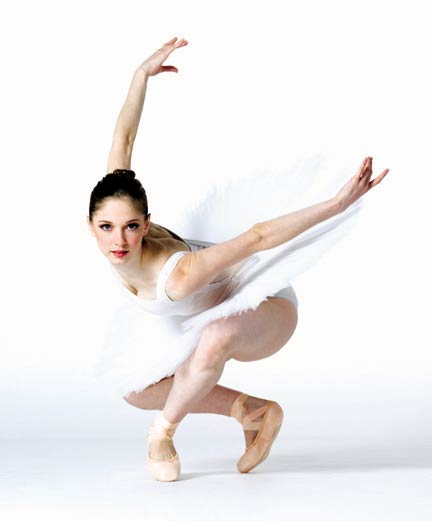When Speed Kills: Houston Ballet
The Houston Ballet--a full-on, full-size, professional ballet company--put on a technically amazing but less-than-stellar show this Saturday. Lightsey Darst explains.

Houston Ballet rolled into town on Saturday night with all the fanfare of a big ballet company— two intermissions, flocks of tutus, hard bodies brightly lit as they bounded through stage space. We have no big ballet company here in Minnesota (instead we have several chamber ballets and occasional larger productions mounted with mixed professional and student casts), so it’s a thrill to see this notable regional company. But what does one see?
“Clear,” choreographed by Houston Ballet Artistic Director Stanton Welch to the music of Bach, is no great work—a little pointless about stage-space, inconsistent in its emotional gestures, and overall not adding up to anything, “Clear” won’t frighten anyone. But it’’s quite good enough, particularly in its execution, to show why those who love contemporary ballet love it.
Ballet’’s pristine complexity, its orderly mix of curves and lines, evokes planetary motion, math, astrophysics; in their speed and precision, the dancers suggest some rarely observed phenomena, high-risk particles hurtling through the strange specificity of their steps, occasional breaking laws with joyful abandon, and always leaving an otherworldly beauty in their trail. At the same time ballet is of the human body—a symmetrical, noble body, upright in the torso, with the dancers’ turn-out (rotation of the whole leg outward) creating open, honest lines. We can wish we were these pared-down and built-up bodies, epitomes of the ideals of Western culture, living forms out of Leonardo da Vinci.
These particular bodies earned their tremendous applause. “Clear” decorates the stage with seven men (and one disposable woman); high-jumping, fast-spinning, and yet elegant in their timing, Houston Ballet’s men are like some new alloy, strong and supple at once. Even the indifference to human emotion this piece displays—a sad gesture here, a swaggering one there—can be part of the appeal of contemporary ballet, for it gives a sense of another realm, of eternity.
“Hush,” choreographed by Christopher Bruce to the music of Bobby McFerrin and Yo-Yo Ma, followed. This little starlit family-scenario, full of novelty moves and sweet little contacts between brothers and sisters and mother and father, is vacuous but harmless—so long as you don’t take it as a picture of anything real. Along with Jane Austen, I can say that “pictures of perfection make me sick and wicked,” and so I couldn’t help taking the whole piece perversely: Mom needs a Valium! Big Sis is having wet dreams about her brothers! And Little Sis is quite the Lolita, as Dad’s noticed. . . But this is just the sort of heartwarming schlock that people jump out of their seats for (as some did at Northrop) —why? Does it enshrine for us a golden vision of our lives, minus strife and sadness? Unendingly saccharine, “Hush” amounts in my book to lying—but I admit that it’s hard not to enjoy the execution this company’s capable of, even in a trifle such as this.
“Velocity,” another Stanton Welch creation and the evening’s closing piece, reminded me of a Star Wars prequel: loud bad music, characters so static you can’t care about them, everything going on so fast there’s no time to feel suspense or tension, and such a desire to get on to celebration that the work never bothers to create itself.
If “Clear” showed how contemporary ballet beguiles its viewers, “Velocity” shows the excesses of contemporary ballet. Music visualization taken to a metronomic extent, with dancers popping out for each new instrument, no thought of counterpoint; partnering so convoluted it loses any sweetness or sexual tension; rule-breaking so constant that one no longer feels the little thrill of violation. Technique is pushed to a frightening extreme (even an X-treme), legs snapping into 12 o’clock penchees with no preparation, each risky combination completed at breakneck speed, with no pause to reap applause, but an insecure rush into the next move. At one point five women were spinning in consecutive double pirouettes into a fouette (rapid whipping turn) followed by a double pirouette, but there was no chance to be amazed, as the dancers were instantly off to more high-speed tricks. “Velocity” must be meant as a showpiece for Houston Ballet, and it certainly proves the dancers can whirl, leap, and stop on a dime, but there’s a lot more to ballet than this.
Worst, “Velocity” shows attitude rather than vision prevailing on the large scale. So much talent, so much time and money in training—it’s dismaying to see how little use is made of this, how little art is made of this. The dancers deserve better. They have trained, after all, not simply to excel at the steps, but to make something of them—to move in ballet’s rarefied world and move us too.